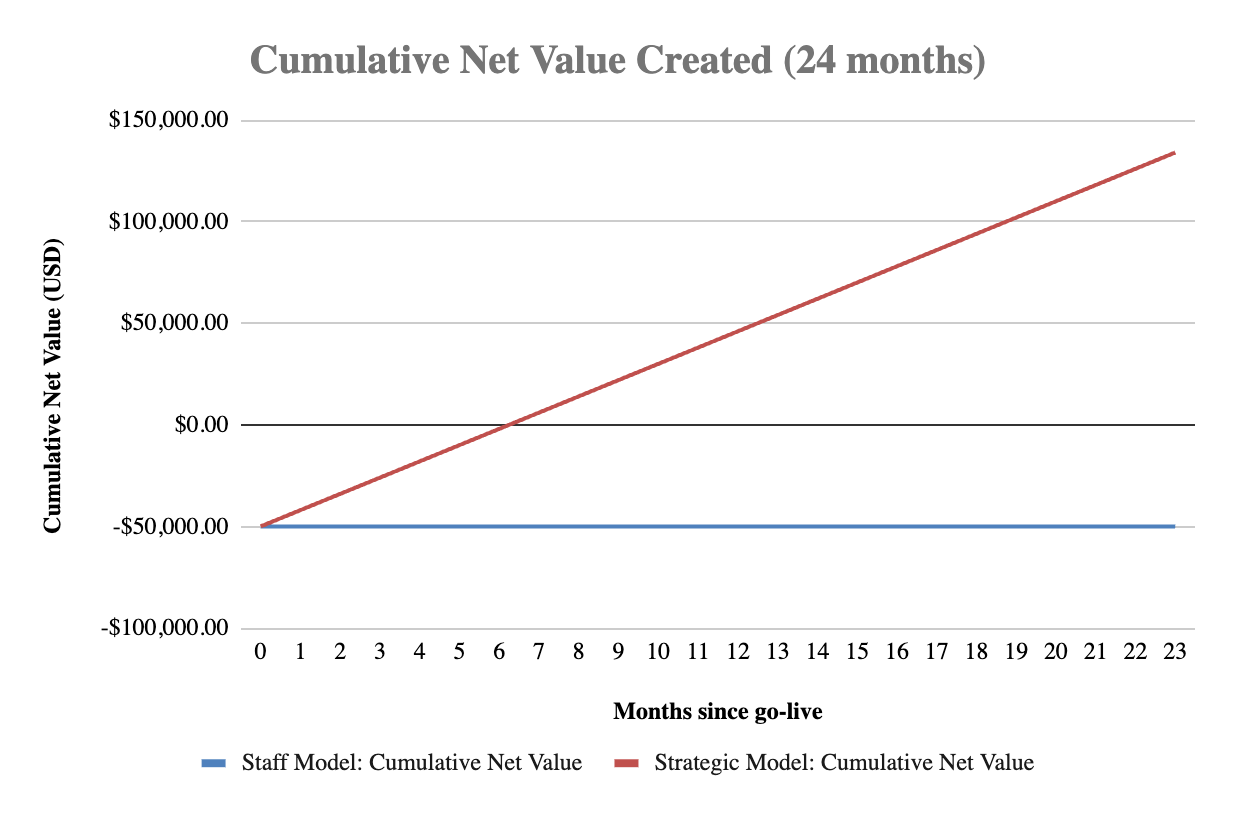How to get your AI project approved
Introducing the strategic employee opportunity cost multiplier
The "hours saved" calculation is killing good AI automation projects before they start. Multiply those hours by loaded cost and most automations look like expensive toys. But that math completely ignores the real economics of talent misallocation.
Here's a better framework: calculate the opportunity cost multiplier for strategic roles. If, by way of a round numbered example, you have a $10M business with 10 employees, each employee is generating roughly $1M in value annually—that's about $500 per hour of value creation, not just their $100/hour loaded cost.
When your top performer spends an hour on administrative work instead of strategy, you're not just destroying $500 in potential value. You're likely destroying much more. Strategic work requires sustained focus and mental energy. Once someone drops into grunt work mode, they burn through their daily capacity for higher level work, whether that work is social or requires deep thought. One hour of invoicing might kill their ability to do strategic work for the rest of the day—or tempt them into other low-value, high-dopamine tasks.
The kicker? Grunt work gravitates upward. Strategic people become the last line of defense when processes break down or need judgment calls. They're the ones who end up handling the "quick fixes" and "one-off exceptions" that junior team members can't resolve. This makes targeting their administrative burden the highest-ROI automation opportunity in your business.
My proof point: client invoicing used to land on my desk every month. Maybe 90 minutes total—not huge by loaded cost math, so I kept pushing automation down the priority list. Classic founder trap: "I can bang this out faster than explaining it to someone else." But invoicing had rolled up to me precisely because it required handling all our billing exceptions and client-specific arrangements.
We finally built the system anyway. Now it automatically nags for unlogged time, cross-references timesheets against workdays and PTO, and generates client-specific invoices with all our billing exceptions baked in. Month opens, invoices are ready.
What surprised me wasn't just getting time back—it was the headspace. Clearing that monthly context switch freed up mental energy I didn't realize I was burning. The relief gave me bandwidth to think strategically. This post might not exist otherwise.
When evaluating AI projects, stop asking "How many hours do we save?" Start asking "Whose hours are these, and what ripple effect does this grunt work have on their strategic capacity?" The real cost might be 2x, 3x, or even 4x the face value of those hours.
That's where the real ROI lives.
—Jon Christnsen


